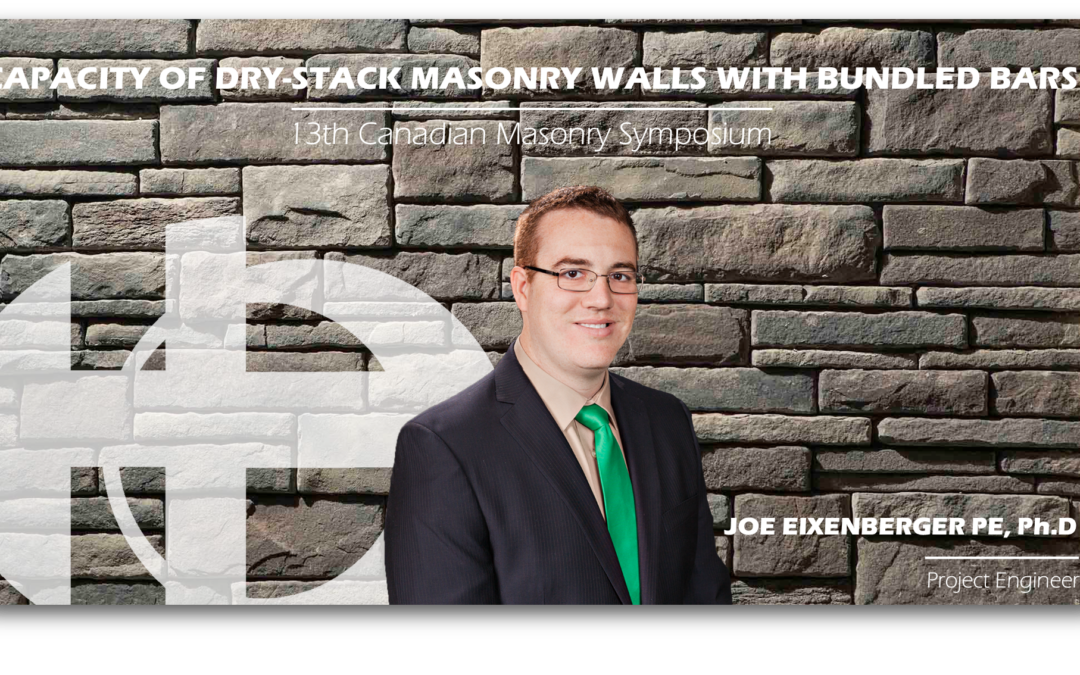“Bundling bars is used in reinforced concrete when limited space or bar size is a concern. However, little to no research has been done on bundling of bars in masonry. In the United States, this has led to an inconsistency when using the Allowable Stress Design (ASD) method compared to the Strength Design (SD) method.”
—Joe Eixenberger
Joe Eixenberger
Capacity of Dry-Stack Masonry Walls with Bundled Bars – 13th Canadian Masonry Symposium
Bundling bars is used in reinforced concrete when limited space or bar size is a concern. However, little to no research has been done on bundling of bars in masonry. In the United States, this has led to an inconsistency when using the Allowable Stress Design (ASD) method compared to the Strength Design (SD) method. Currently, the ASD method allows for bundled bars but the SD method does not. Research was done on reinforced dry-stack masonry to examine the capacity of bundled bars. A total of 6 walls were constructed and tested. Two unreinforced walls were built to determine the simple shear capacity of the walls while the other four walls were built with 2 #4 horizontal bars at 1.22 m on center and various amounts of vertical reinforcement.
The average shear capacity of the unreinforced walls was 12.45 kN, that of the walls with 2 #4 vertical and 2 #4 horizontal bars at 1.22 m on center was 68.83 kN, and that of the walls with 2 #4 vertical bars at 0.61 m on center and 2 #4 horizontal bars at 1.22 m on center was 89.18 kN.
The data from these tests were compared to expectant results using the TMS 402 design equation following the SD method to assess the validity of the method when bundled bars are used. Since a dry-stack system was utilized, the TMS shear equation only accounts for the capacity of the reinforcement, and since the bars were bundled only one reinforcement bar is considered to resist shear. When the contribution of the dry-stack system and grout are considered, the calculated capacity is between 42.17 kN to 71.09 kN depending on the number of bars considered and the number of grouted cells. The results show that the walls reinforced with bundled bars were able to resist 54 and 140% greater load than that predicted by the equation when ignoring the contribution of the masonry and grout. When considering the contribution of the grout, masonry, and bundled bars the capacity of the walls were 4-42% greater than the calculated capacity.

